A Review of Geometry, Construction and Modelling for Carbon Nanotori
Abstract
1. Introduction
2. Geometry and Construction of Carbon Nanotori
3. Lennard-Jones Potential and Continuum Approximation
4. Mathematical and Theoretical Framework for Interaction Energy of Nanotorus with Other Nanostructures
4.1. Interaction Energy of Point and Torus
4.2. Interaction Energy of Sphere Encapsulated Inside Torus
4.3. Interaction Energy of Sphere and Nanotorus
4.4. Interaction Energy of Two Tori
4.5. Interaction Energy of Cylinder and Torus
4.6. Interaction Energy of Offset Molecule and Torus
5. Physical Roles, Properties and Applications
5.1. Electronic Properties
5.2. Magnetic Properties
5.3. Some Potential Applications
6. Conclusions
Author Contributions
Funding
Conflicts of Interest
References
- Iijima, S. Helical microtubules of graphitic carbon. Nature 1991, 354, 56–58. [Google Scholar] [CrossRef]
- Saito, R.; Dresselhaus, G.; Dresselhaus, M. Physical Properties of Carbon Nanotubes; World Scientific Publishing: Singapore, 1998. [Google Scholar]
- Ray, S.C. Applications of Graphene and Graphene-Oxide Based Nanomaterials; William Andrew: Oxford, UK, 2015. [Google Scholar]
- Bakry, R.; Vallant, R.; Haq, M.; Rainer, M.; Szabo, Z.; Huck, C.; Bonn, G. Medicinal applications of fullerenes. Int. J. Nanomed. 2007, 2, 639–649. [Google Scholar]
- Thamwattana, N.; Hill, J.M. Nanotube bundle oscillators: Carbon and boron nitride nanostructures. Physica B 2009, 404, 3906–3910. [Google Scholar] [CrossRef]
- Karousis, N.; Martinez, I.S.; Ewels, C.P.; Tagmatarchis, N. Structure, properties, functionalization, and applications of carbon nanohorns. Chem. Rev. 2016, 116, 4850–4883. [Google Scholar] [CrossRef] [PubMed]
- Liu, J.; Dai, H.; Hafner, J.H.; Colbert, D.T.; Smalley, R.E. Fullerene ‘crop circles’. Nature 1997, 385, 780–781. [Google Scholar] [CrossRef]
- Geng, J.; Ko, Y.K.; Youn, S.C.; Kim, Y.H.; Kim, S.A.; Jung, D.H.; Jung, H.T. Synthesis of SWNT rings by noncovalent hybridization of porphyrins and single-walled carbon nanotubes. J. Math. Chem. C 2008, 112, 12264–12271. [Google Scholar] [CrossRef]
- Zhou, Z.; Wan, D.; Bai, Y.; Dou, X.; Song, L.; Zhou, W.; Mo, Y.; Xie, S. Ring formation from the direct floating catalytic chemical vapor deposition. Physica E 2006, 33, 24–27. [Google Scholar] [CrossRef]
- Kukushkin, A.B.; Neverov, V.S.; Marusov, N.L.; Semenov, I.B.; Kolbasov, B.N.; Voloshinov, V.V.; Afanasiev, A.P.; Tarasov, A.S.; Stankevich, V.G.; Svechnikov, N.Y. Few-nanometer-wide carbon toroids in the hydrocarbon films deposited in tokamak T-10. Chem. Phys. Lett. 2011, 506, 265–268. [Google Scholar] [CrossRef]
- Natsuki, T.; Tantrakarn, K.; Endo, M. Effects of carbon nanotube structures on mechanical properties. Appl. Phys. A 2004, 79, 117. [Google Scholar] [CrossRef]
- Zhang, X.F.; Zhang, Z. Polygonal spiral of coil-shaped carbon nanotubes. Phys. Rev. B 1995, 52, 5313–5317. [Google Scholar] [CrossRef]
- Dunlap, B.I. Constraints on small graphitic helices. Phys. Rev. B 1994, 50, 5134–8137. [Google Scholar] [CrossRef]
- Ihara, S.; Itoh, S. Helically coiled and toroidal cage forms of grapitic carbon. Carbon 1995, 33, 931–939. [Google Scholar] [CrossRef]
- Feng, C.; Liew, K.M. A molecular mechanics analysis of the buckling behavior of carbon nanorings under tension. Carbon 2009, 47, 3508–3514. [Google Scholar] [CrossRef]
- Liu, L.; Liu, F.; Zhao, J. Curved carbon nanotubes: From unique geometries to novel properties and peculiar applications. Nano Res. 2014, 7, 626–657. [Google Scholar] [CrossRef]
- Rappé, A.K.; Casewit, C.J.; Colwell, K.S.; Goddard, W.A.; Skiff, W.M. UFF, a full periodic table force field for molecular mechanics and molecular dynamics simulations. J. Am. Chem. Soc. 1992, 114, 10024–10035. [Google Scholar] [CrossRef]
- Yazgan, E.; Taşci, E.; Malcioğlu, O.; Erkoç, S. Electronic properties of carbon nanotoroidal structures. J. Mol. Struct. THEOCHEM 2004, 681, 231–234. [Google Scholar] [CrossRef]
- Ahlskog, M.; Seynaeve, E.; Vullers, R.J.M.; Haesendonck, C.V.; Fonseca, A.; Hernadi, K.; Nagy, J.B. Ring formations from catalytically synthesized carbon nanotubes. Chem. Phys. Lett. 1999, 300, 202–206. [Google Scholar] [CrossRef]
- Martel, R.; Shea, H.R.; Avouris, P. Ring formation in single-wall carbon nanotubes. J. Phys. Chem. B 1999, 103, 7551–7556. [Google Scholar] [CrossRef]
- Thess, A.R.; Lee, P.N.; Dai, H.; Petit, P.; Robert, J.; Xu, C.; Lee, Y.H.; Kim, S.G.; Rinzler, A.G.; Colbert, D.T.; et al. Crystalline ropes of metallic carbon nanotubes. Science 1996, 273, 483–487. [Google Scholar] [CrossRef]
- Meunier, V.; Lambin, P.; Lucas, A.A. Atomic and electronic structures of large and small carbon tori. Phys. Rev. B 1998, 57, 14886. [Google Scholar] [CrossRef]
- Chang, I.L.; Chou, J.W. A molecular analysis of carbon nanotori formation. J. Appl. Phys. 2012, 112, 063523. [Google Scholar] [CrossRef]
- Dunlap, B.I. Connecting carbon tubules. Phys. Rev. B 1992, 46, 1933–1936. [Google Scholar] [CrossRef]
- Dunlap, B.I. Relating carbon tubules. Phys. Rev. B 1994, 49, 5643–5650. [Google Scholar] [CrossRef]
- Fonseca, A.; Hernadi, K.; Nagy, J.; Lambin, P.; Lucas, A.A. Model structure of perfectly grapitizable coiled carbon nanotubes. Carbon 1995, 33, 1759–1775. [Google Scholar] [CrossRef]
- Cox, B.J.; Hill, J.M. New carbon molecules in the form of elbow-connected nanotori. J. Phys. Chem. C 2007, 111, 10855–10860. [Google Scholar] [CrossRef]
- Baowan, D.; Cox, B.J.; Hill, J.M. Toroidal molecules formed from three distinct carbon nanotubes. J. Math. Chem. 2008, 44, 515–527. [Google Scholar] [CrossRef]
- Ihara, S.; Itoh, S. Toroidal forms of graphitic carbon. Phys. Rev. B 1993, 47, 12908–12911. [Google Scholar] [CrossRef]
- Itoh, S.; Ihara, S. Toroidal forms of graphitic carbon. II. Elogated tori. Phys. Rev. B 1994, 48, 8323–8328. [Google Scholar] [CrossRef]
- Sano, M.; Kamino, A.; Okamura, J.; Shinkai, S. Ring closure of carbon nanotubes. Science 2001, 293, 1299–1301. [Google Scholar] [CrossRef]
- Guo, A.; Fu, Y.; Guan, L.; Zhang, Z.; Wu, W.; Chen, J.; Shi, Z.; Gu, Z.; Huang, R.; Zhang, X. Spontaneously formed closed rings of single-wall carbon nanotube bundles and their physical mechanism. J. Phys. Chem. C 2007, 111, 3555–3559. [Google Scholar] [CrossRef]
- Komatsu, N.; Shimawaki, T.; Aonuma, S.; Kimura, T. Ultrasonic isolation of toroidal aggregates of single-walled carbon nanotubes. Carbon 2006, 44, 2091–2093. [Google Scholar] [CrossRef]
- Colomer, J.F.; Henrard, L.; Flahaut, E.; Tendeloo, G.V.; Lucas, A.A.; Lambin, P. Rings of double-walled carbon nanotube bundles. Nano Lett. 2003, 3, 685–689. [Google Scholar] [CrossRef]
- Yu, H.; Zhang, Q.; Luo, G.; Wei, F. Rings of triple-walled carbon nanotube bundles. Appl. Phys. Lett. 2006, 89, 223106. [Google Scholar] [CrossRef]
- László, I.; Rassat, A. Toroidal and spherical fullerene-like molecules with only pentagonal and heptagonal faces. Int. J. Quantum Chem. 2001, 84, 136–139. [Google Scholar] [CrossRef]
- Lennard-Jones, J.E. Cohesion. Proc. Phys. Soc. 1931, 43, 461–482. [Google Scholar] [CrossRef]
- Maitland, G.C.; Rigby, M.; Smith, E.B.; Wakeham, W.A. Intermolecular Forces: Their Origin and Determination; Clarendon Press: Oxford, UK, 1981. [Google Scholar]
- Girifalco, L.A.; Hodak, M.; Lee, R.S. Carbon nanotubes, buckyballs, ropes, and a universal graphitic potential. Phys. Rev. B 2000, 62, 13104–13110. [Google Scholar] [CrossRef]
- Sarapat, P.; Hill, J.M.; Baowan, D. Mechanics of atoms interacting with a carbon nanotorus: Optimal configuration and oscillation behaviour. Philos. Mag. 2019, 99, 1386–1399. [Google Scholar] [CrossRef]
- Baowan, D.; Cox, B.J.; Hilder, T.A.; Hill, J.M.; Thamwattana, N. Modelling and Mechanics of Carbon-Based Nanostructured Materials; William Andrew: Oxford, UK, 2017. [Google Scholar]
- Sarapat, P.; Baowan, D.; Hill, J.M. Interaction energy for a fullerene encapsulated in a carbon nanotorus. Z. Angew. Math. Phys. 2018, 69, 77. [Google Scholar] [CrossRef]
- Sarapat, P.; Baowan, D.; Hill, J.M. Equilibrium location for spherical DNA and toroidal cyclodextrin. Appl. Nanosci. 2018, 8, 537–544. [Google Scholar] [CrossRef]
- Sarapat, P.; Hill, J.M.; Baowan, D. Optimal configurations for carbon nanotori. Appl. Nanosci. 2019, 9, 225–232. [Google Scholar] [CrossRef]
- Hilder, T.A.; Hill, J.M. Oscillating carbon nanotori along carbon nanotubes. Phys. Rev. B 2007, 75, 125415. [Google Scholar] [CrossRef]
- Hilder, T.A.; Hill, J.M. Orbiting atoms and C60 fullerenes inside carbon nanotori. J. Appl. Phys. 2007, 101, 064319. [Google Scholar] [CrossRef]
- Yu, M.F.; Lourie, O.; Dyer, M.J.; Moloni, K.; Kelly, T.F.; Ruoff, R.S. Strength and breaking mechanism of multiwalled carbon nanotubes under tensile load. Science 2000, 287, 637–640. [Google Scholar] [CrossRef] [PubMed]
- Wong, E.W.; Sheehan, P.E.; Lieber, C.M. Nanobeam mechnaics: Elasticity, strength and toughness of nanorods and nanotubes. Science 1997, 277, 1971–1975. [Google Scholar] [CrossRef]
- Taşci, E.; Yazgan, E.; Malcioğlu, O.B.; Erkoç, Ş. Stability of carbon nanotori under heat treatment: Molecular- dynamics simulations. Fuller. Nanotub. Carbon Nanostruct. 2006, 13, 147–154. [Google Scholar] [CrossRef]
- Chen, N.; Lusk, M.T.; Duin, A.C.T.; Goddard, W.A. Mechanical properties of connected carbon nanorings via molecular dynamics simulation. Phys. Rev. B 2005, 72, 085416. [Google Scholar] [CrossRef]
- Sun, B. Deformation, vibration, buckling of continuum nanotorus. J. Nanomater. 2010, 67, 480628. [Google Scholar] [CrossRef]
- Çağin, T.; Gao, G.; Goddard, W.A. Computational studies on mechanical properties of carbon nanotori. Turk. J. Phys. 2006, 30, 221–229. [Google Scholar]
- Zhang, Z.; Yang, Z.; Wand, X.; Yuan, J.H.; Zhang, M.Q. The electronic structure of a deformed chiral carbon nanotorus. J. Phys. Condens. Matter. 2005, 17, 249–255. [Google Scholar] [CrossRef]
- Liu, L.; Jayanthi, C.S.; Wu, S.Y. Structural and electronic properties of a carbon nanotorus: Effects of delocalized and localized deformations. Phys. Rev. B 2001, 64, 033412. [Google Scholar] [CrossRef]
- Liu, C.P.; Ding, J.W. Electronic structure of carbon nanotori: The roles of curvature, hybridization, and disorder. J. Phys. Condens. Matter 2006, 18, 4077–4084. [Google Scholar] [CrossRef]
- Latgé, A.; Rocha, C.G.; Wanderley, L.A.L.; Pacheco, M.; Orellana, P.; Barticevic, Z. Defects and external field effects on the electronic properties of a carbon nanotube torus. Phys. Rev. B 2003, 67, 155413. [Google Scholar] [CrossRef]
- Oh, D.H.; Park, J.M.; Kim, K.S. Structures and electronic properties of small carbon nanotube tori. Phys. Rev. B 2000, 62, 1600–1603. [Google Scholar] [CrossRef]
- Wu, X.; Zhou, R.; Yang, J.; Zeng, X.C. Density-functional theory studies of step-kinked carbon nanotubes. J. Phys. Chem. C 2011, 115, 4235–4239. [Google Scholar] [CrossRef]
- Manzo, J.A.R.; Urías, F.L.; Terrones, M.; Terrones, H. Magnetism in corrugated carbon nanotori: The importance of symmetry, defects and negative curvature. Nano Lett. 2004, 4, 2179–2183. [Google Scholar] [CrossRef]
- Liu, C.P.; Chen, H.B.; Ding, J.W. Magnetic response of carbon nanotori: The importance of curvature and disorder. J. Phys. Condens. Matter 2008, 20, 015206. [Google Scholar] [CrossRef]
- Haddon, R.C. Electronic properties of carbon toroids. Nature 1997, 388, 31–32. [Google Scholar] [CrossRef]
- Lin, M.F.; Chuu, D.S. Persistent currents in toroidal carbon nanotubes. Phys. Rev. B 1998, 57, 6731–6737. [Google Scholar] [CrossRef]
- Liu, C.P.; Xu, N. Magnetic response of chiral carbon nanotori: The dependence of torus radius. Physica B 2008, 403, 2884–2887. [Google Scholar] [CrossRef]
- Liu, L.; Guo, G.Y.; Jayanthi, C.S.; Wu, S.Y. Colossal paramagnetic moments in metallic carbon nanotori. Phys. Rev. Lett. 2002, 88, 217206. [Google Scholar] [CrossRef]
- Zhang, Z.; Yuan, J.; Qiu, M.; Peng, J.; Xiao, F. Persistent currents in carbon nanotori: Effects of structure deformations and chirality. J. Appl. Phys. 2006, 99, 104311. [Google Scholar] [CrossRef]
- Tang, X. Persistent current in a carbon nanotube torus encapsulated with a carbon ring. J. Phys. Condens. Matter 2011, 23, 105302. [Google Scholar] [CrossRef]
- Latil, S.; Roche, S.; Rubio, A. Persistent currents in carbon nanotube based rings. Phys. Rev. B 2003, 67, 165420. [Google Scholar] [CrossRef]
- Shea, H.R.; Martel, R.; Avouris, P. Electrical transport in rings of single-wall nanotubes: One-dimensional localization. Phys. Rev. Lett. 2000, 84, 4441. [Google Scholar] [CrossRef]
- Chan, Y.; Cox, B.J.; Hill, J.M. Carbon nanotori as traps for atoms and ions. Physica B 2012, 407, 3479–3483. [Google Scholar] [CrossRef]
- Sumetpipat, K.; Lee, R.K.F.; Cox, B.J.; Hill, J.M.; Baowan, D. Carbon nanotori and nanotubes encapsulating carbon atomic-chains. J. Math. Chem. 2014, 52, 1817–1830. [Google Scholar] [CrossRef]
- Lusk, M.T.; Hamm, N. Toroidal carbon nanotubes with encapsulated atomic metal loops. Phys. Rev. B 2007, 76, 125422. [Google Scholar] [CrossRef]
- Hilder, T.A.; Hill, J.M. Orbiting nanosectors inside carbon nanotori. Nano Lett. 2007, 2, 50–53. [Google Scholar] [CrossRef]



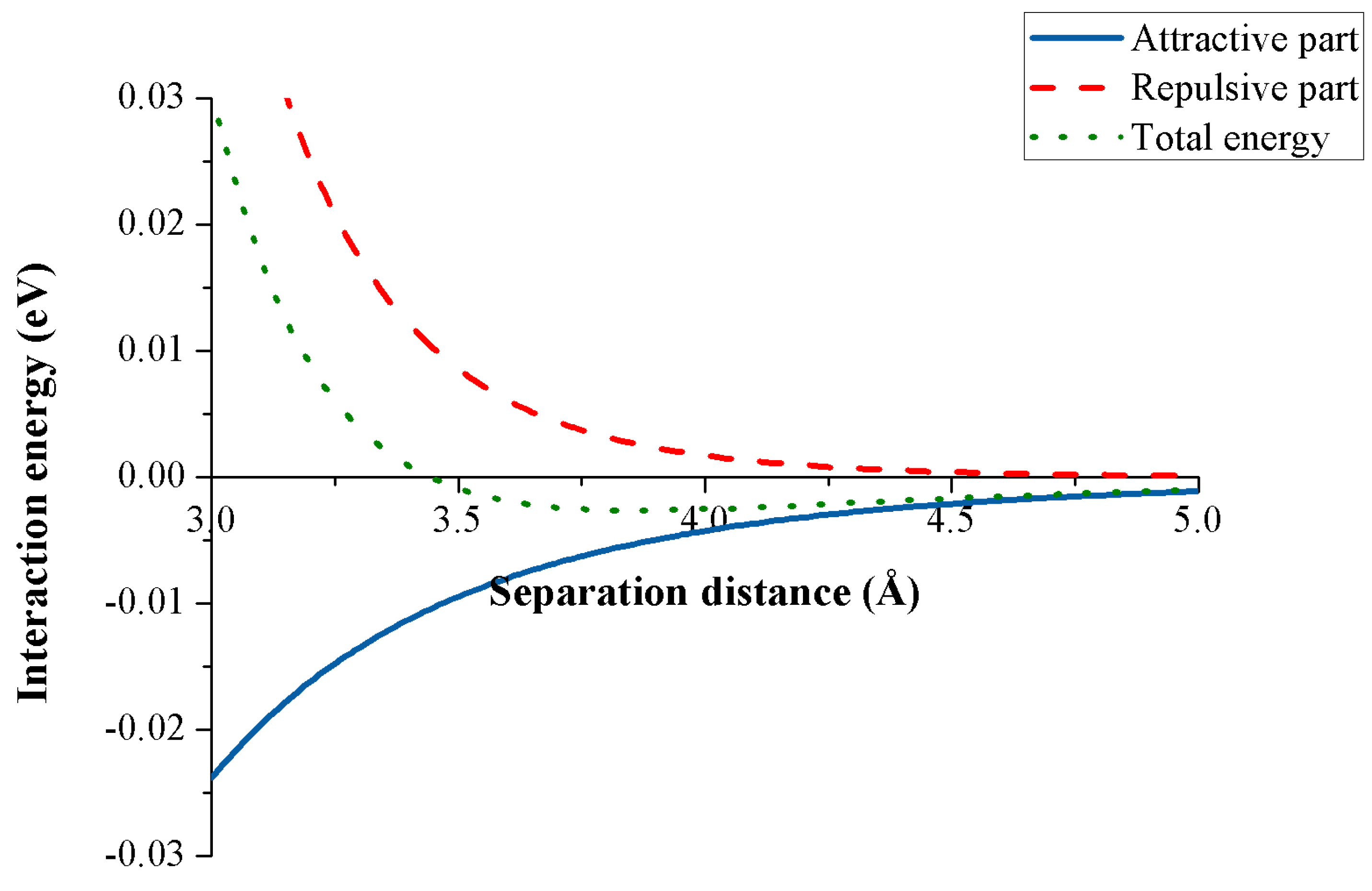
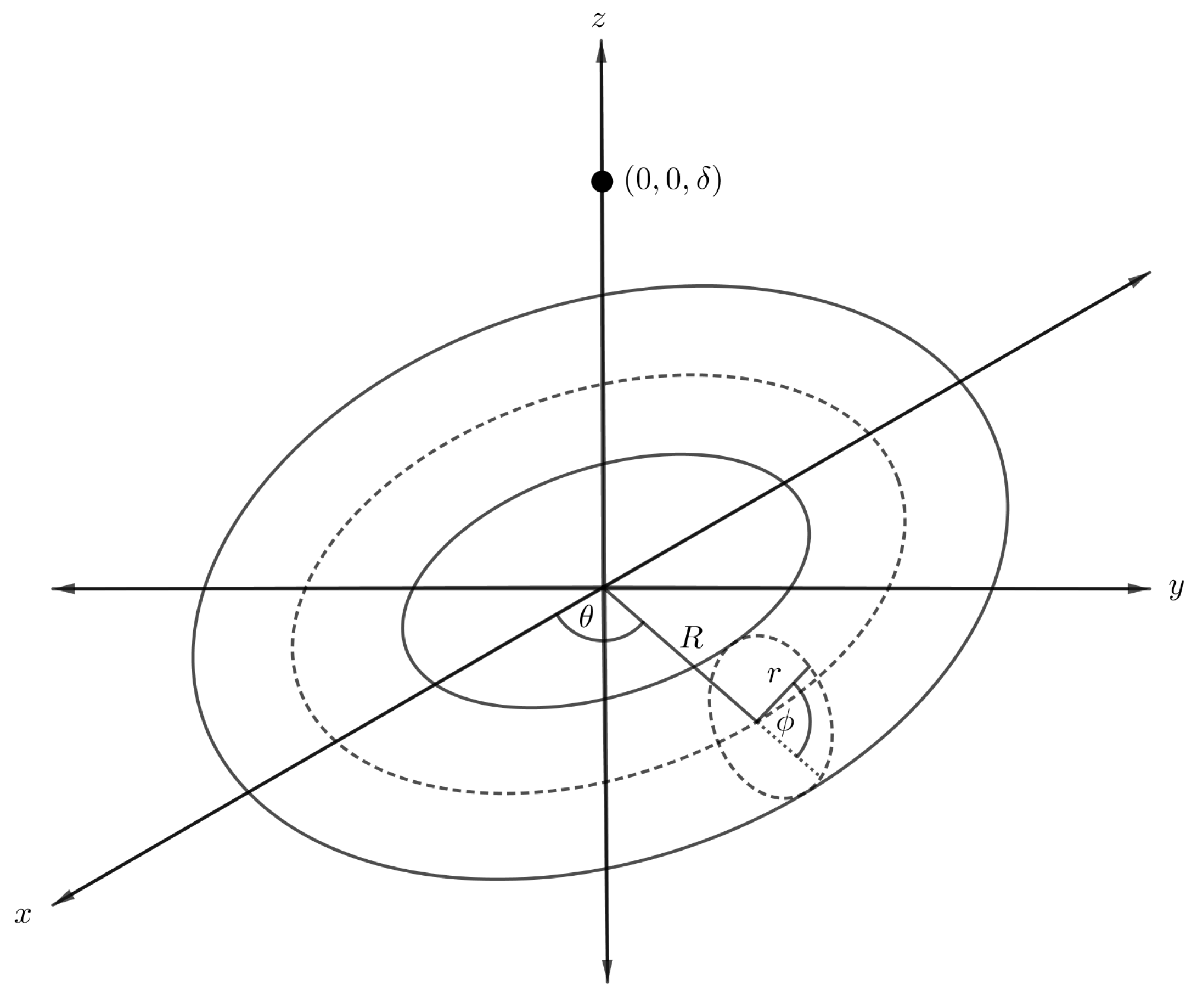
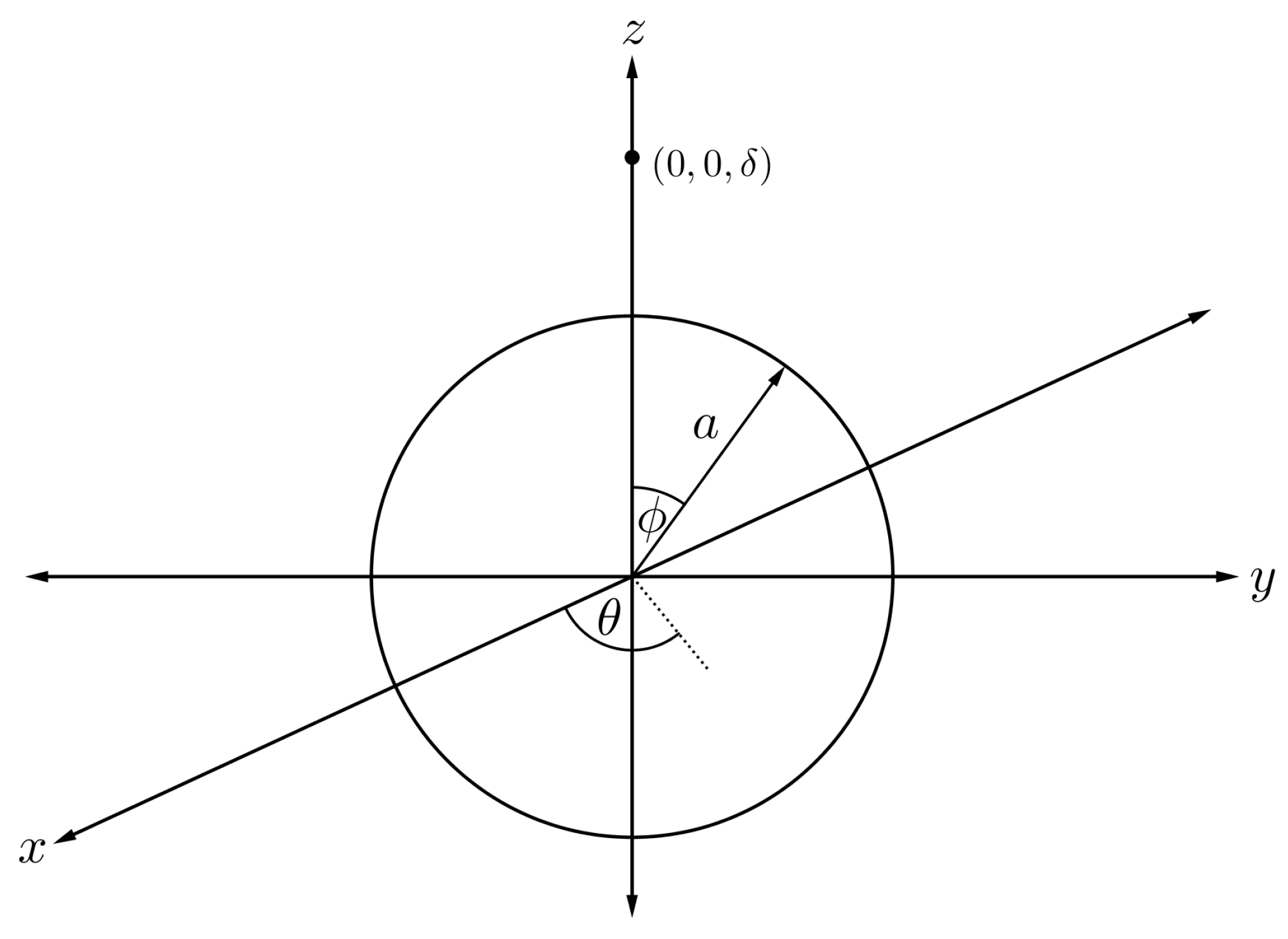

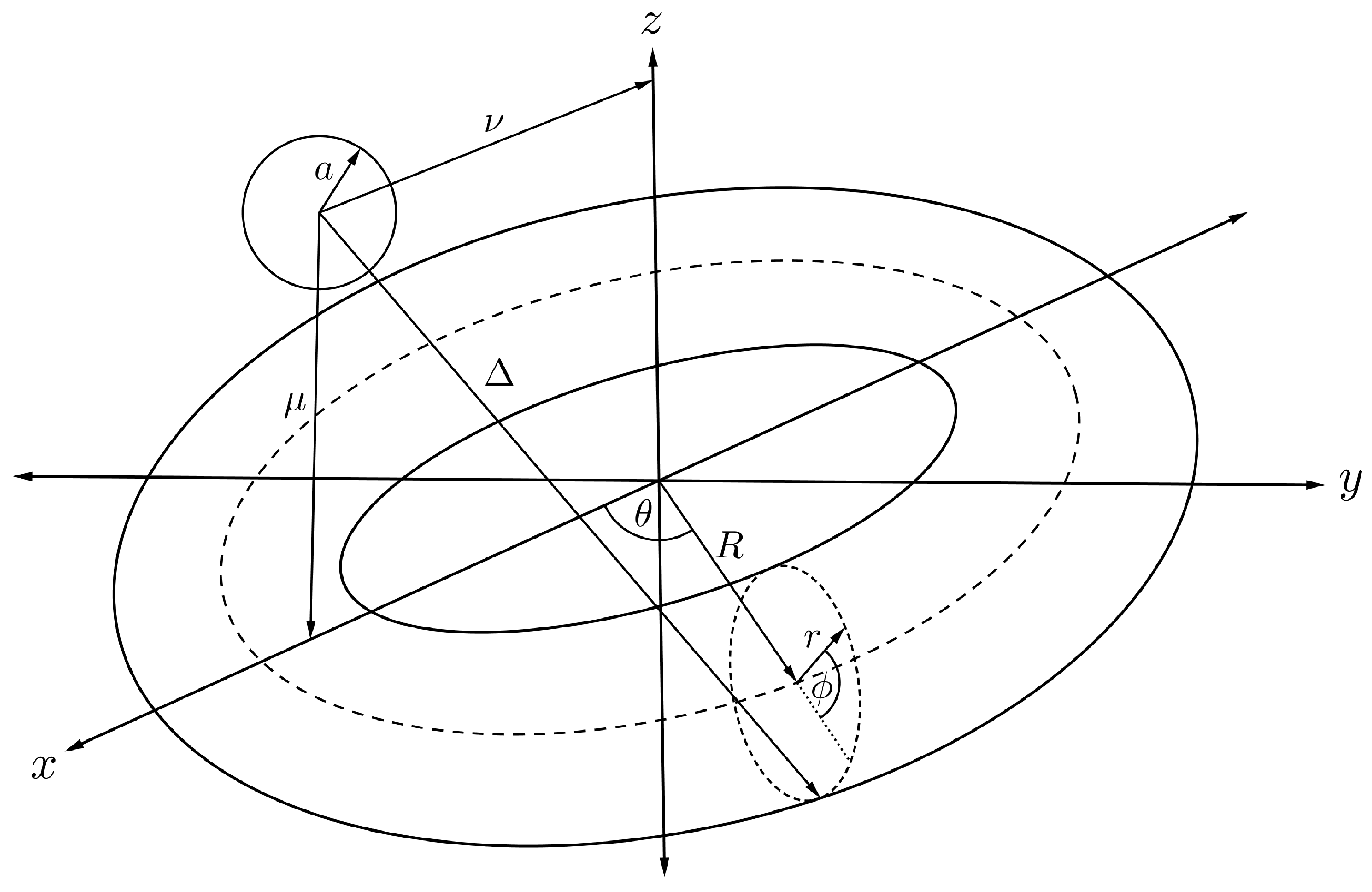

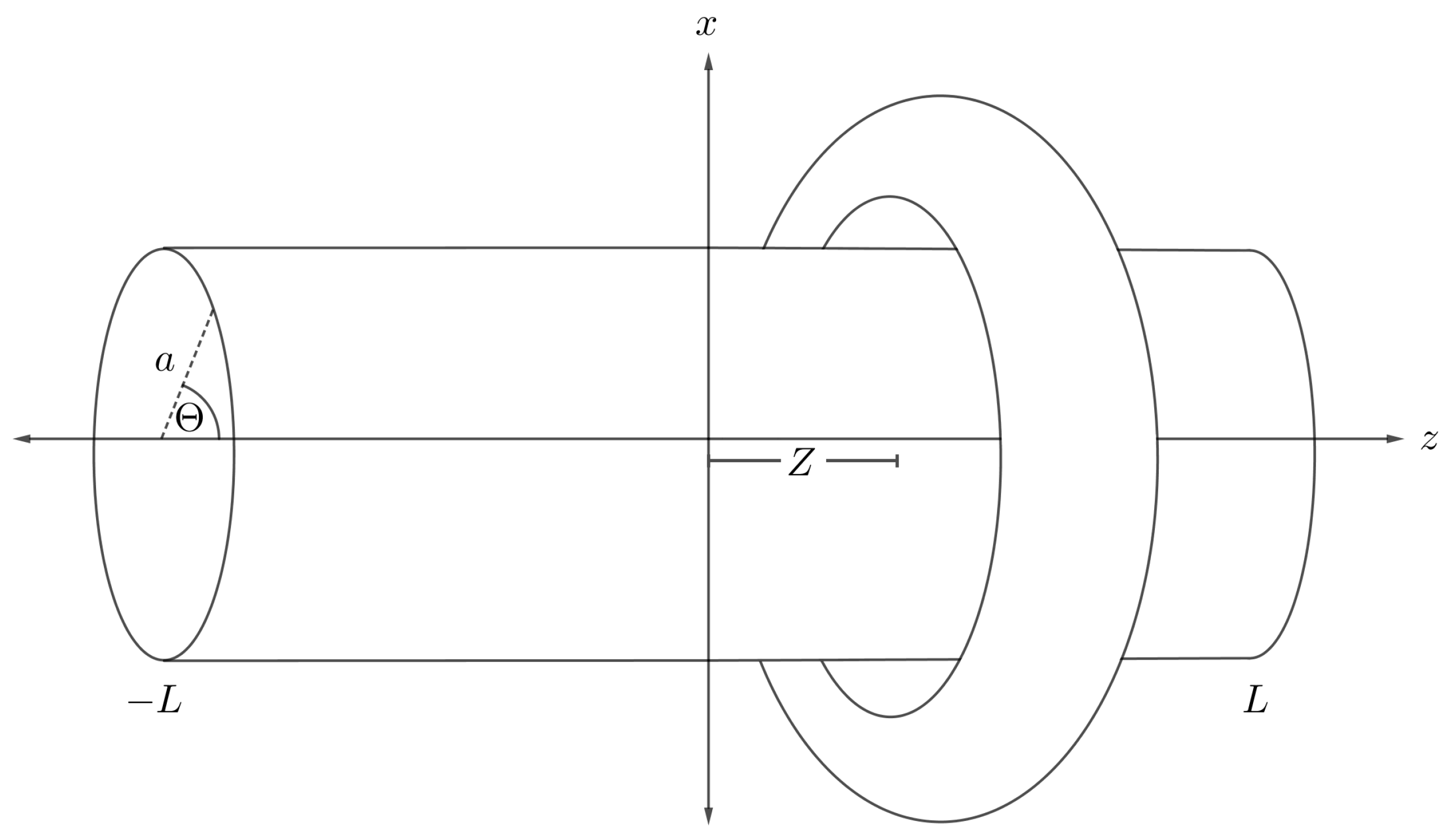





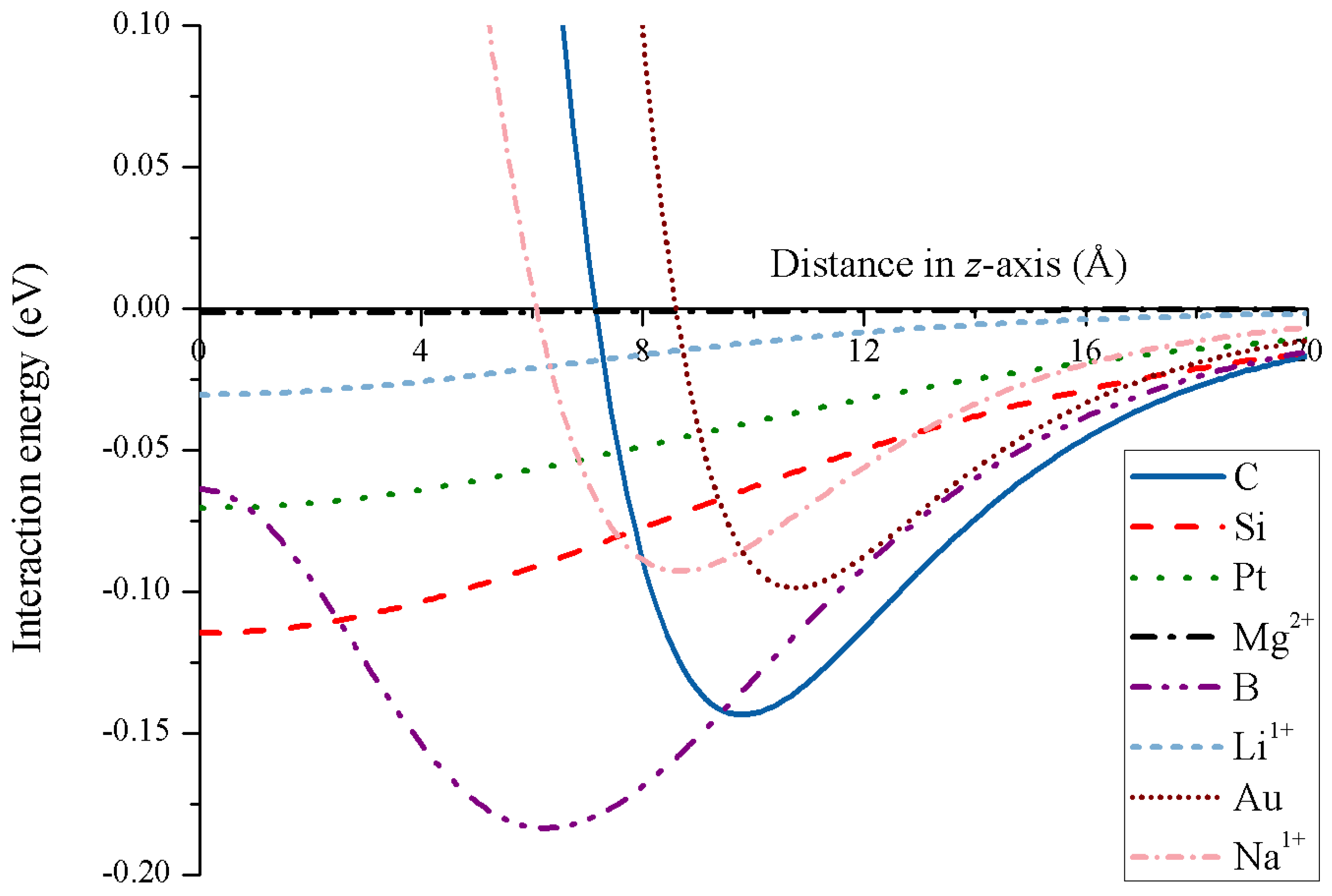
© 2019 by the authors. Licensee MDPI, Basel, Switzerland. This article is an open access article distributed under the terms and conditions of the Creative Commons Attribution (CC BY) license (http://creativecommons.org/licenses/by/4.0/).
Share and Cite
Sarapat, P.; Hill, J.M.; Baowan, D. A Review of Geometry, Construction and Modelling for Carbon Nanotori. Appl. Sci. 2019, 9, 2301. https://doi.org/10.3390/app9112301
Sarapat P, Hill JM, Baowan D. A Review of Geometry, Construction and Modelling for Carbon Nanotori. Applied Sciences. 2019; 9(11):2301. https://doi.org/10.3390/app9112301
Chicago/Turabian StyleSarapat, Pakhapoom, James M. Hill, and Duangkamon Baowan. 2019. "A Review of Geometry, Construction and Modelling for Carbon Nanotori" Applied Sciences 9, no. 11: 2301. https://doi.org/10.3390/app9112301
APA StyleSarapat, P., Hill, J. M., & Baowan, D. (2019). A Review of Geometry, Construction and Modelling for Carbon Nanotori. Applied Sciences, 9(11), 2301. https://doi.org/10.3390/app9112301





